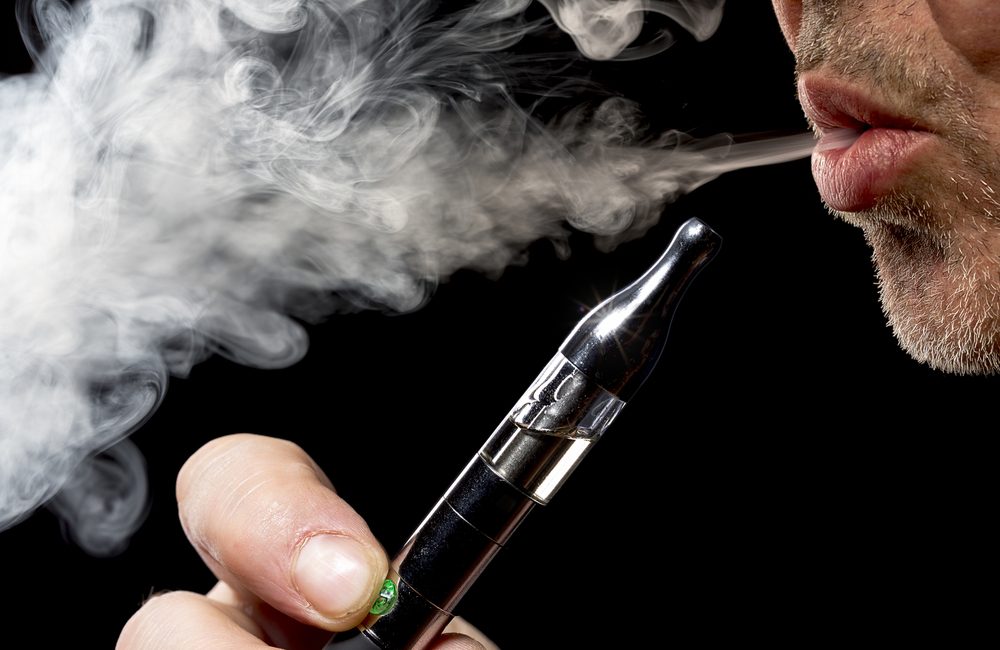What is vaping?
An electronic cigarette is an electronic device that simulates tobacco smoking. It consists of an atomizer, a power source such as a battery, and a container such as a cartridge or tank. Instead of smoke, the user inhales vapor. As such, using an e-cigarette is often called “vaping.” Within the last decade vaping has become more prevalent with adults trying to: stop smoking, be healthier, get around the smoke free areas, and for recreational enjoyment. But over the few years E-cig use has also increased among high school and even middle school students.
Because vaping is still relatively new research needs to catch up on exactly what the negative heath effects are for vaping, but it has been shown to lead to negative oral health over extended use without proper upkeep.
But how can vaping be bad for teeth if it’s just vapor? The liquid in the e-cigarette, called e-liquid, is usually made up of propylene glycol, glycerin, flavorings, water, and nicotine, although some users will substitute THC for nicotine. Propylene glycol (PG), is a colorless, viscous carrier product that breaks down into acetic acid, lactic acid and propionaldehyde. These are toxic to tooth enamel and soft tissue. Another ingredient is glycerin, which is 60 percent as sweet as sucrose yet isn’t typically known to cause cavities because it isn’t metabolized by cariogenic bacteria. That all changes when glycerin and flavorings combine: There is a two-time increase in biofilm formation and a fourfold increase in microbial adhesion to enamel. The one-two punch of softened enamel and the e-liquid make it easier for cavity-causing bacteria to stick to teeth and lead to rampant decay. The dangerous effects of nicotine on gum tissue are well known. Nicotine is believed to affect gingival blood flow as it is a vasoconstrictor. It also affects cytokine production, neutrophil function, and other immune cell function. In addition, nicotine decreases connective tissue turnover. All of this results a much higher chance of developing gum disease and tooth loss.
The following side effects may occur as a result of vaping with or without nicotine:
bleeding or swollen gums
changes in sensitivity to temperature
loose teeth
mouth ulcers or sores that don’t seem to heal
toothache or mouth pain
teeth stains and discoloration
teeth grinding
gingivitis
periodontitis
dry mouth
plaque accumulation
receding gums
Excess bacteria in pits and crevices of teeth that can lead to:
- Tooth decay
- Cavities
- Gum disease
Gum Inflammation that can lead to:
- periodontal diseases
- bone loss
- tooth loss
- bad breath
- tooth decay
Try to promote these things to help reduce overall risks for side effects:
- Limiting or eliminating vaping
- Limit your nicotine intake. Opting for low-nicotine or nicotine-free juices can help limit the negative effects of nicotine on your teeth and gums.
- Drink water after you vape. Avoid dry mouth and bad breath by rehydrating after you vape.
- Floss before bed. Like brushing, flossing helps remove plaque and promotes gum health.
- Visit a dentist on a regular basis. If you can, see a dentist every six months for a cleaning and consultation. Maintaining a regular cleaning schedule will aid in the early detection and treatment of any underlying conditions.
- Brush twice a day with a fluoride toothpaste. Wait at least 20 minutes after vaping to brush so that brushing won’t weaken the enamel further.
Mybestsmile.com carries great products to offer to patients in order to combat against the effects of vaping.
A wide variety of:
- Toothpastes
- Brushes
- Flosses
- Teeth whiteners
- Mouthwashes
- Probiotics
- Dry Mouth Remedies
- Sore and Pain reliefs
- and many more!
If other serious issues occur, schedule a dental visit as soon as possible.

